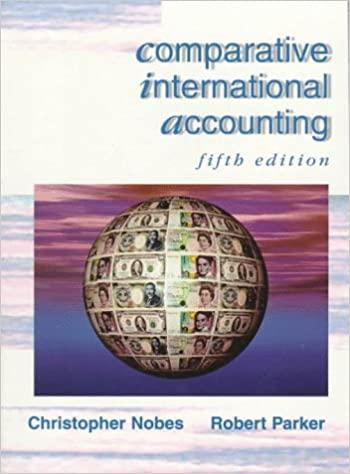Question
1-A.Pams Creations had the following sales and purchase transactions during Year 2. Beginning inventory consisted of 60 items at $350 each. The company uses the
1-A.Pams Creations had the following sales and purchase transactions during Year 2. Beginning inventory consisted of 60 items at $350 each. The company uses the FIFO cost flow assumption and keeps perpetual inventory records.
| Date | Transaction | Description | ||
|---|---|---|---|---|
| March 5 | Purchased | 50 items @ $370 | ||
| April 10 | Sold | 30 items @ $450 | ||
| June 19 | Sold | 60 items @ $450 | ||
| September 16 | Purchased | 70 items @ $390 | ||
| November 28 | Sold | 45 items @ $480 | ||
Required 1. Record the inventory transactions in general journal format. (If no entry is required for a transaction/event, select "No journal entry required" in the first account field.)
a Record purchase of inventory for cash.
b.Record the sale of inventory for cash.
c.Record entry for cost of goods sold.
d.Record sales of inventory for cash.
e.Record entry for cost of goods sold
f.Record purchase of inventory for cash
g.Record sale of inventory for cash
h.Record entry for cost of goods sold.
2.. Calculate the gross margin Pams Creations would report on the Year 2 income statement.
3.Determine the ending inventory balance Pams Creations would report on the December 31, Year 2, balance sheet.
1-B
The following information pertains to Mason Company for Year 2.
| Beginning inventory | 90 units @ $40 |
|---|---|
| Units purchased | 310 units @ $45 |
The ending inventory consisted of 30 units. Mason sold 370 units at $90 each. All purchases and sales were made with cash. Operating expenses amounted to $4,100.
Required a. Compute the gross margin for Mason Company using the following cost flow assumptions: (1) FIFO, (2) LIFO, and (3) weighted average. (Round cost per unit to 3 decimal places and final answers to the nearest whole dollar amount.)
b. What is the amount of net income using FIFO, LIFO, and weighted average? (Ignore income tax considerations.) (Round cost per unit to 3 decimal places and final answers to the nearest whole dollar amount.)
c. Compute the amount of ending inventory using (1) FIFO, (2) LIFO, and (3) weighted average. (Round cost per unit to 3 decimal places and final answers to the nearest whole dollar amount.)
Step by Step Solution
There are 3 Steps involved in it
Step: 1

Get Instant Access to Expert-Tailored Solutions
See step-by-step solutions with expert insights and AI powered tools for academic success
Step: 2

Step: 3

Ace Your Homework with AI
Get the answers you need in no time with our AI-driven, step-by-step assistance
Get Started


